Complete Solutions to EXAMPLES of chapter CAPACITANCE AND CAPACITOR of Class 12 book with complete answers and questions
| Class 12 | PHYSICS |
| Chapter | CAPACITANCE AND CAPACITOR |
| CHHAYA PRAKASHINI | EXAMPLES |
| Number Of Questions | 67 |
| Academic Year | 2023-24 |
The capacitance of a spherical conductor is `1 muF` and the charge on it is -10C. What is its potential in air?
03:13View SolutionThe potential of a conductor having 40 esu of capacitance is raised by 10 esu. What is the charge on the conductor ? How much charge is to be given to another conductor, having capacitance three times that of the first conductor, to raise its potential three times that of the first one?
04:40View SolutionRadius of the earth is 6400 km. Determine its capacitance in `muF`.
04:00View SolutionA metal sphere has a diameter of 1m. What will be the amount of charge required to rate its potential by `2.7 xx 10^(6)V`?
04:12View SolutionIs it possible for a metal sphere of radius 1 cm to hold a charge of 1C ?
03:37View SolutionThe diameter of a spherical liquid drop is 2 mm and its charge is `5 xx 10^(-6)` esu.
What is the potential on its surface?04:05View SolutionThe diameter of a spherical liquid drop is 2 mm and its charge is `5 xx 10^(-6)` esu.
If two such liquid drops coalesce to form a bigger drop, what will be the potential on its surface ?04:05View SolutionA conductor of capacity 4 units, charged with 100 units of positive charge is connected to another conductor of capacity 2 units, charged with 20 units of negative charge. What is the change in potential of each conductor ? What will be the charges of each of them after connection?
07:45View SolutionAn insulated metallic vessel full of water is charged with a potential of 3V. Drops of water are tricking from an arifice at the bottem of the vessel. What is the amount of charge contained in each spherical drop of radius 1mm?
03:27View SolutionThe radii of two insulated metal spheres are 5 cm and 10 cm. They are charged up to potential of 10 esu and 15 esu, respectively. If the two shperes are connected with one another, what will be the loss of energy?
03:19View SolutionA metal sphere of radius 10 cm is charged up to a potential of 80 esu. After sharing its chage with another sphere, the common potential of them becomes 20 esu. What is the radius of the second sphere ?
05:01View SolutionOne thousand similar electrified raindrops merge into a single one so that their total charge remains unchanged. Find the change in the total electrostatic energy of the drops, assuming that all the drops are spherical and the small drops were initially at large distances from one another.
05:07View SolutionTwo equally charged soap bubbles of equal volume join together to form a large bubble. If each small bubble had a potential V, find the potential of the resultant bubble.
03:17View SolutionEight spherical liquid drops join to form a large drop. Diameter of each drop is 2mm and charge `5mu` statC. What is the potential on the surface of the large drop?
06:13View SolutionThe ratio of the capacitance of two conductors A and B is 2: 3. The conductor A gains a certain amount of charge and shares it with B. Compare the initial energy of A with the total energy of A and B.
07:04View SolutionEach of 27 identical mercury drops is charged to a potential of 10V. If the drops coalesce to form a big drop, what will be its potential? Calculate the ratio of the energy of the big drop to that of a small drop.
09:09View SolutionCharges of `10^(-2)C " and " 5xx 10^(-2)C` are put on two metal spheres of radii 1 cm and 2 cm respectively. If they are connected with a metal wire, what will be the final charge on the smaller sphere ?
06:47View SolutionThe capacitance and potential, respectively, of a conductor A are 10 unit 50 unit, those of another conductor B are, respectively, 5 unit and 65 unit. Find out the charges on the two conductors after they are connected by a conductiong wire.
05:10View SolutionA spherical liquid drop of capacitance `1muF` breaks into 8 drops of the same radius. What is the capacitance of each of these smaller drops?
03:39View SolutionTwo isolated metallic solid spheres fo radii R and 2R are charged in such a way that both of these have same charge density `sigma`. The spheres are placed far away from each other and are connected by a thin conducting wire. Find the new charge density on the bigger sphere.
View SolutionThe area of each plate of a parallel plate glass capacitor is `314 cm^2`. Its plates are separated by a distance 1 cm. What will be the radius of a sphere having a capacitance equal to that of this capacitor ? [k of glass=8]
03:15View SolutionThe area of each plate of a parallel plate capacitor is 22 `cm^2` and the plates are kept separated by a paraffin paper of thickness 1mm. Specific inductive capacity of paraffin paper is 2. What are the capacitance of the capacitor and the surface density of charge under a potential difference of 330V?
04:50View SolutionThe distance between the two plates of a parallel plate air capacitor is d. A piece of metal of thickness `(d)/(2)` and of area equal to that of the plates is inserted between the plates. Compare the capacitances in the two cases.
03:16View SolutionThe conducting plates of a parallel plate capacitor are separated by 2 cm from each other. A dielectric slab (k =5) of thickness 1 cm is inserted between the two plates. The distance between the plates is now so changed that the capacitance of the capacitor remains the same. What will be the new distance between the plates?
05:01View SolutionSurface area of each plate of a parallel plate capacitor is 50 `cm^2`. They are separated by 2mm in air. It is connected with a 100V power supply. Now a dielectric ( k =5) is inserted between its two paltes. What will happen
If the voltage source remains connected?05:54View SolutionSurface area of each plate of a parallel plate capacitor is 50 `cm^2`. They are separated by 2mm in air. It is connected with a 100V power supply. Now a dielectric ( k =5) is inserted between its two plates. What will happen
If the voltage source is absent during this insertion?06:51View SolutionEach of the two square plates of a capacitor has sides of length l. The angle `theta` between the two plates is very small. If the medium between the plates is air and the minimum distance between them is t, determine the capacitance of the capacitor.
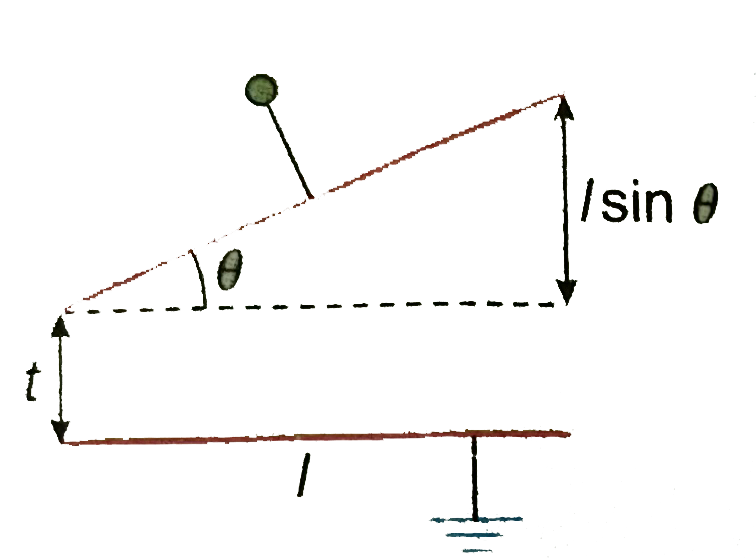 View Solution
View SolutionA parallel plate air capacitor has a capacitance of 2pF. Now, the separation between the plates is doubled, and the space is filled with wax. If the capacitance rises to 6pF, what is the dielectric constant of wax?
04:10View SolutionThe area of each plate of a parallel plate capacitor is A = `600 cm^2` and their separation is d = 2.0 mm. The capacitor is connected to a 200 V dc source. Find out
the uniform electric field between the plates in SI unit?01:52View SolutionThe area of each plate of a parallel plate capacitor is A = `600 cm^2` and their separation is d = 2.0 mm. The capacitor is connected to a 200 V dc source. Find out
the surface density of charge on any plate. Given, `in_0 = 8.85xx10^(-12)F*m^(-1)`.02:49View SolutionThe potential of a capacitor increases from zero to 150 V when a charge of 10 esu is imparted to it. What will be the energy stored in the capacitor?
02:23View SolutionFind out the energy content in a volume of `1 cm^3` around a point, situated in the electric field of a point charge of 10C, at a distance of 2 m in air from the position of the point charge. Given, `in_0 = 8.85 xx10^(-12)F*m^(-1)`.
04:39View SolutionEstimate the percentange change of the energy stored in a parallel plate capacitor, if the separation between its plates is reduced by 10%, keeping the voltage of the charging source unchanged?
05:35View SolutionA 900pF capacitor is charged to 100V by a battery. How much energy is stored in the capacitor?
02:24View SolutionThe capacitance of a parallel plate air capacitor is C. The capacitor is immesed half way into an oil of dielectric constant 1.6 with the plates perpendicular to the surface of the oil. What will be the capacitance of this capacitor?
04:13View SolutionA condenser is composed of 21 circular plates placed one after the other. The diameter of each plate is 10 cm. The consecutive plates are separated by 0.2 mm thick mica sheets of dielectric constant 6. If the alternate circular plates are connected, calculate the capacitance of the condenser in `muF`.
05:46View SolutionA condenser is composed of 200 circular tin plates placed one after the other. The consecutive plates are separated by 0.5 mm thick mica sheets of dielectric constant 6. If the alternate tin plates are connected and the capacitance of the entire condenser is `0.4 muF`, what is the radius of each tin plate?
06:26View SolutionThe equivalent capacitance of the parallel and the series combinations of two capacitors are `5mu F " and " 1.2 muF`, respectively. Calculate the capacitances of each capacitor.
04:41View SolutionTwo capacitors of capacitances `20muF " and " 60muF` are connceted in series. If potential difference between the two ends of the combination is 40 V, calculate the terminal potential differences of each capacitor?
06:13View SolutionA charged condenser is made to share its charge with an uncharged condenser of twice its capacitance. Find the sum of the energy of the two condensers?
03:49View SolutionA spherical drop of water carries a charge of `10xx10^(-12)C` and has a potential of 100V at its surface.
What is the radius of the drop ?04:19View SolutionA spherical drop of water carries a charge of `10xx10^(-12) C` and has a potential of 100 V at its surface. If eight such charged drops combine to form a single drop, what will be the potential at the surface of the new drop?
02:24View SolutionThree plates of the same size form a system of capacitors. Each plate has an area `alpha`. The intermediate distances between the plates are `d_1 " and "d_2`, respectively. The space between the first two plates is occupied by a dielectric of constant `k_1` and that between the second and third plates by a dielectric of constant `k_2`. Calculate the capacitance of the system.
04:01View SolutionThe capacitance of a parallel plate air capacitor is 9pF. The separation between the plates is d. The intermidate space is filled up by two dielectric media. The widths of them are `(d)/(3) " and "(2d)/(3)`, and their dielectric constants are 3 and 6, respectively. Find the capacitance of the parallel plate capacitor?
05:55View SolutionThree capacitors having capacitances `1 muF,2muF " and "3 muF` are joined in series. A potential difference of 1100 V is applied to the combination. Find the charge and potential difference across each capacitor.
06:20View SolutionTwo capacitors having capacitances `0.1muF " and "0.01muF` are joined in series. A potential difference of 22V is applied to the combination. If the capacitors are now joined in parallel, what will be the change in stored energy?
07:30View SolutionFive capacitors have been arranged in a circuit. Capacitance of each capacitor is C. Determine the effective capacitance between the points A and B.
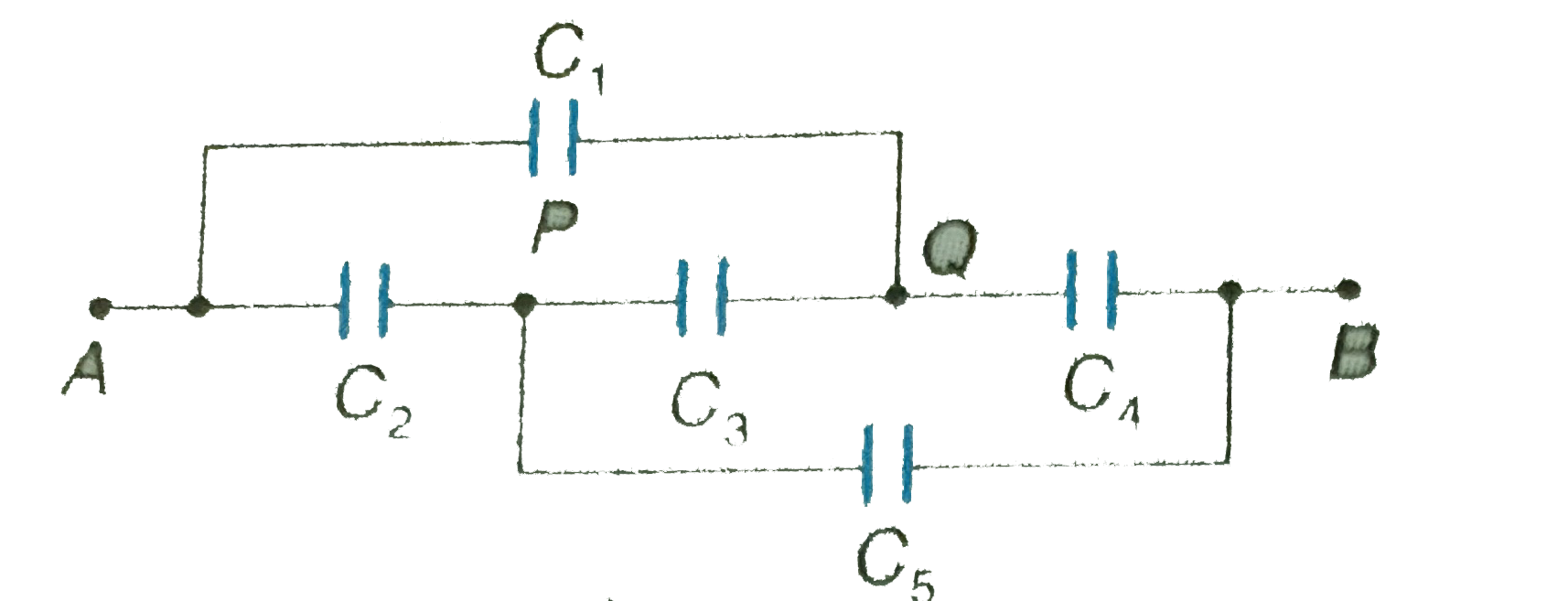 View Solution
View SolutionShow that the equivalent capacitance of an infinite circuit formed by the repetation of a similar loop made of two similar capacitors, each of capacitance `C = (sqrt(5)+1)muF, " is "2 muF`.
 View Solution
View SolutionTwelve capacitors, each of capacitance `10muF`, are inserted at the sides of a cube made of conducting wires. Determine the equivalent capacitance between A and B.
View SolutionIn Fig. 4.30, two identical parallel plate air capacitors are connected to a battery. At first the key S is closed and then it is opend. The space between the two capacitors are now filled up with a dielectric, having dielectric constant 3. Determine the ratio of the energy stored in the two capacitors before and after insertion of the dielectric?
 View Solution
View SolutionDetermine the capacitance of the capacitor C in Fig.4.31 when the equivalent capacitance between A and B is `1 muF`. The unit of all the capacitances is `muF`
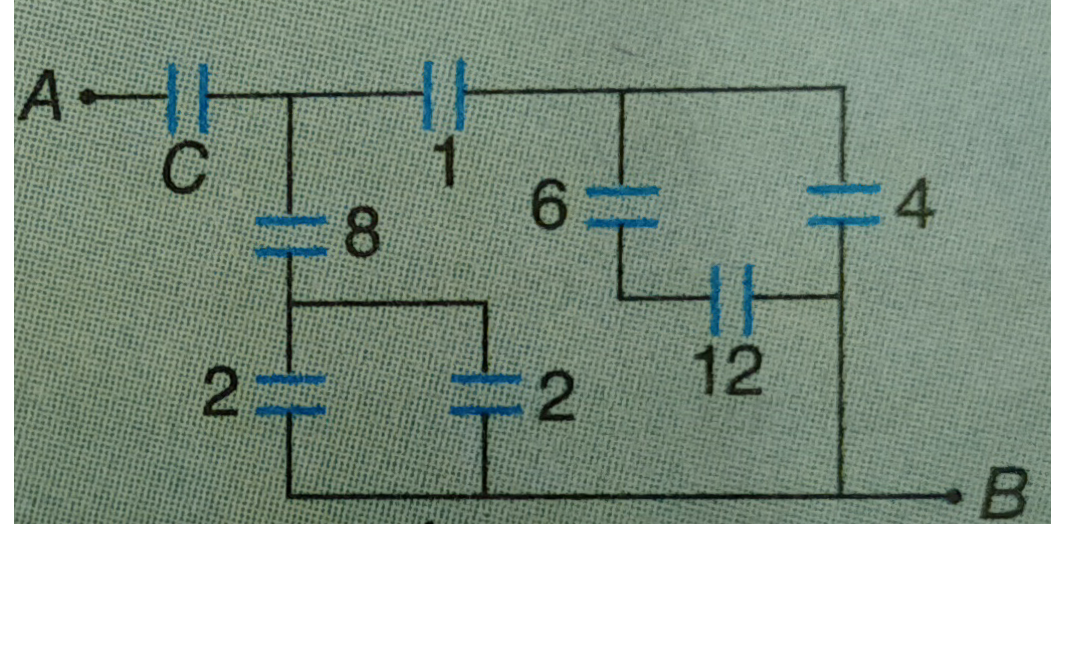 View Solution
View SolutionThree capacitors A,B,C are connected in such a way that their equivalent capacitance is equal to the capacitance of B. The capacitances of A and B are `10 muF " and " 30muF` respectively and `C ne 0`. Determine three possible values of C and also show how the capacitors are to be connected in the three cases.
View SolutionTwo parallel plate capacitors of capacitances C and 2C are connected in parallel and charged to a potential difference V. The battery is then disconnected and the region between the plates of the capacitor C is completely filled with a material of dielectric constant k. What is the potential difference across the capacitors now?
04:35View SolutionA potential difference of 20V is applied across a parallel combination of three identical capacitors. If the total charge in the combination be 30C, determine the capacitance of each capacitor. What will be the charge in the series combination of these three capacitors with the same potential difference?
06:02View SolutionThe capacitance of a parallel plate air capacitor is C. Now, half the areas of its plates are vertically dipped in an oil of dielectric constant 1.6. What would be its capacitance?
04:00View SolutionEach of the plates of a parallel plate capacitor is a circular disc of radius 5 cm. Find out its capacitance if the separation between the plates is 1 mm.
03:51View SolutionA `2muF` capacitor is charged to a potential of 20V. Another `3muF` uncharged capacitor is connected in parallel with the first capacitor. What would be the terminal potential difference of the combination? Find out the charges on the two capacitors?
07:02View SolutionA `20muF` capacitor is charged to a potential of 20V and is then connected to an uncharged `10muF` capacitor. Find out the common potential and the ratio of the energies stored in the two capacitors.
07:13View SolutionHow should three capacitors of capacitances `3muF,3muF" and "6muF`, be connected to get an equivalent capacitance of `5muF`?
04:57View SolutionThe capacitance of a parallel plate capacitor with plate area A and separation s is C. The space between the plates is filled with two wedges of dielectric constants `k_1 " and k_2` as shown in figure. Find the capacitance of the resultant capacitor.
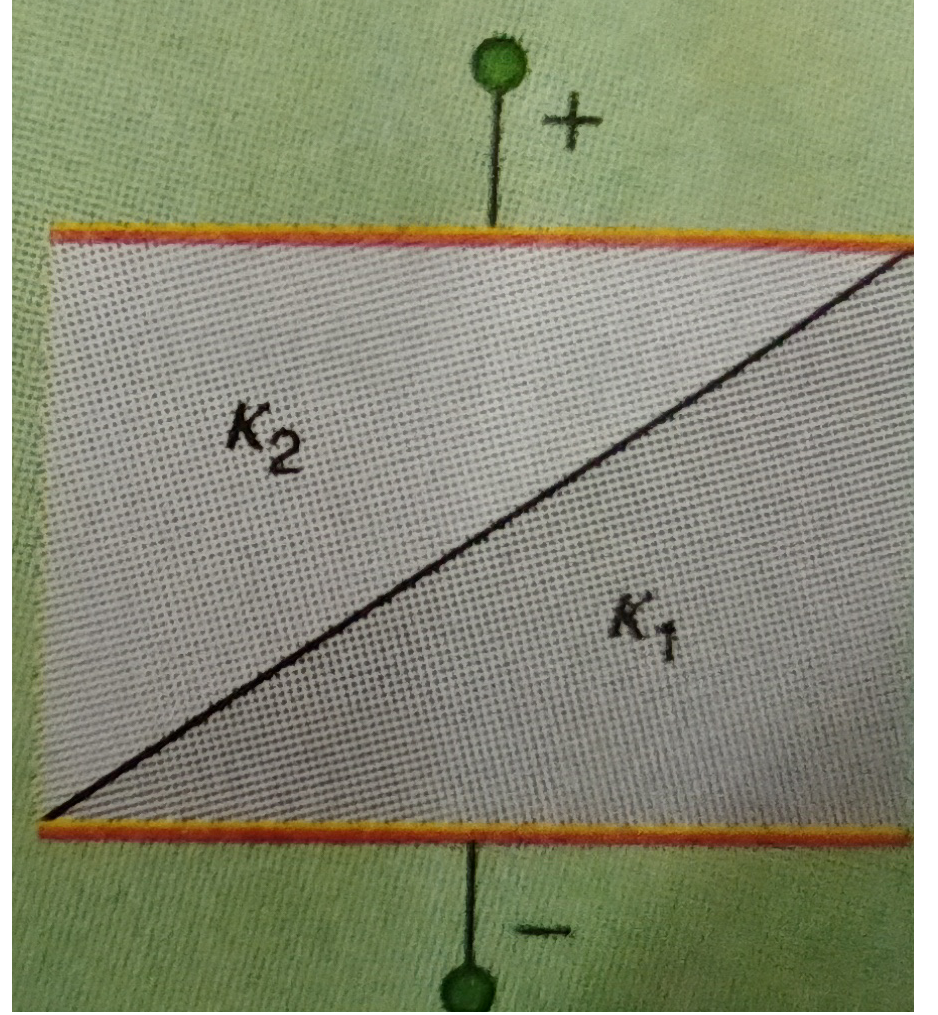 View Solution
View SolutionConsider a parallel plate capacitor of plate separation d. Each plate has the length l and the width a. A dielectric slab of permittivily `in` and thickness d, is partially inserted between the plates. The plates are kept at a constant potential differenc V. If x is the length of the dielectric slab within the plates, determine the force exerted on the slab.
 View Solution
View SolutionA parallel plate capacitor of capacitances C is connected to a battery to charge it to a potential V. Similarly, another capacitor of capacitance 2C is charged to a potential 2V. Now the batteries are removed, and the two capacitors are connected in parallel by joining the positive plate to one with the negative plate of the other. Find out the final energy of the system.
04:15View SolutionIn the circuit of figure, the values of the capacitances of the four capacitors are `C_1=C,C_2=2C,C_3=3C " and "C_4=4C`. Find out the ratio between the charges on `C_2" and C_4`.
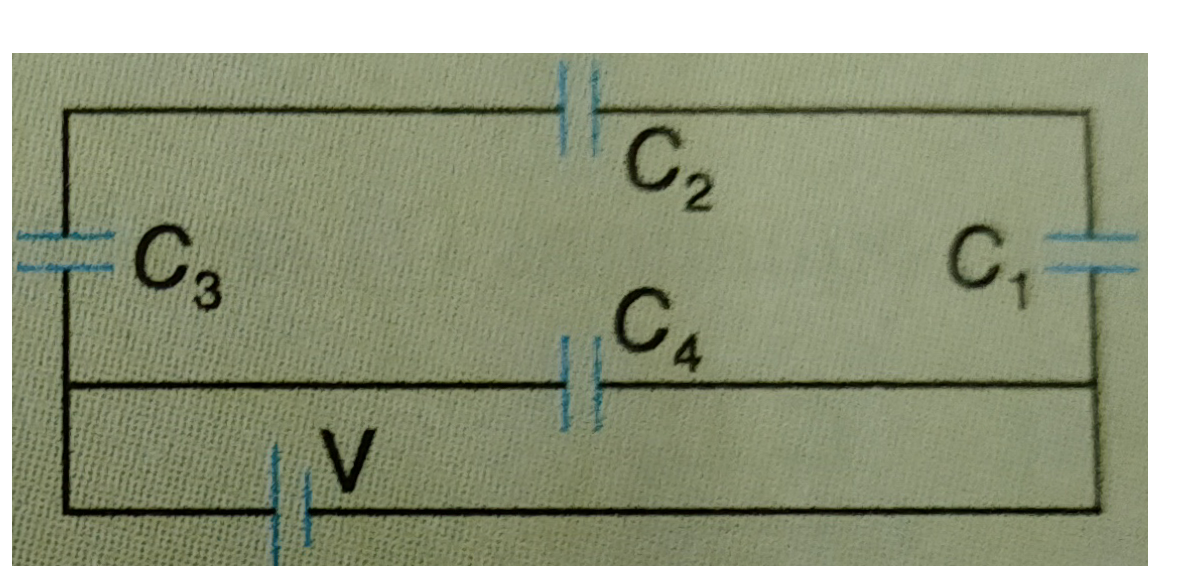 View Solution
View SolutionFive capacitors, each of capacitance `10muF`, form a network as shown in the Fig.4.38. The network is connected to a 100V dc supply. Calculate the equivalent capacitance between A and B, and the charge accumulated in the network.
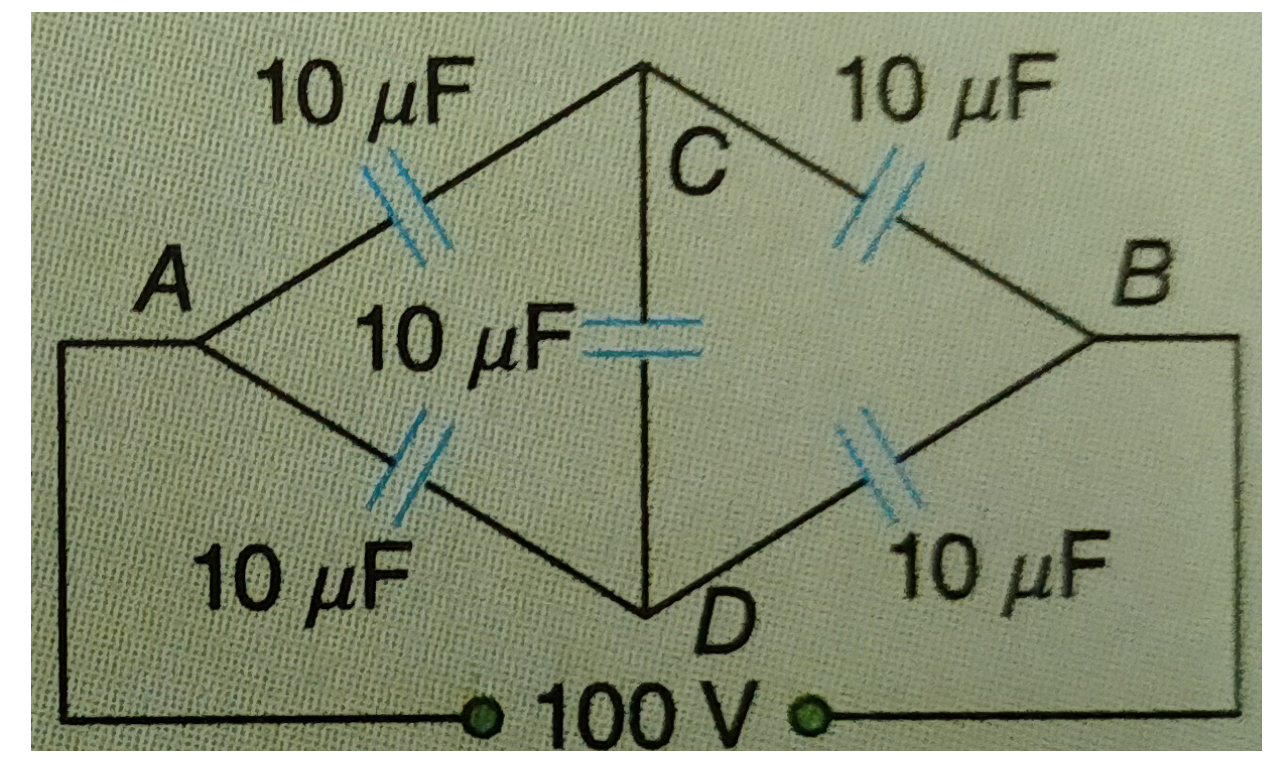 View Solution
View SolutionIn the network of Fig.4.39., the capacitance of each capacitor is `1 muF`. Determine the equivalent capacitance between P and Q.
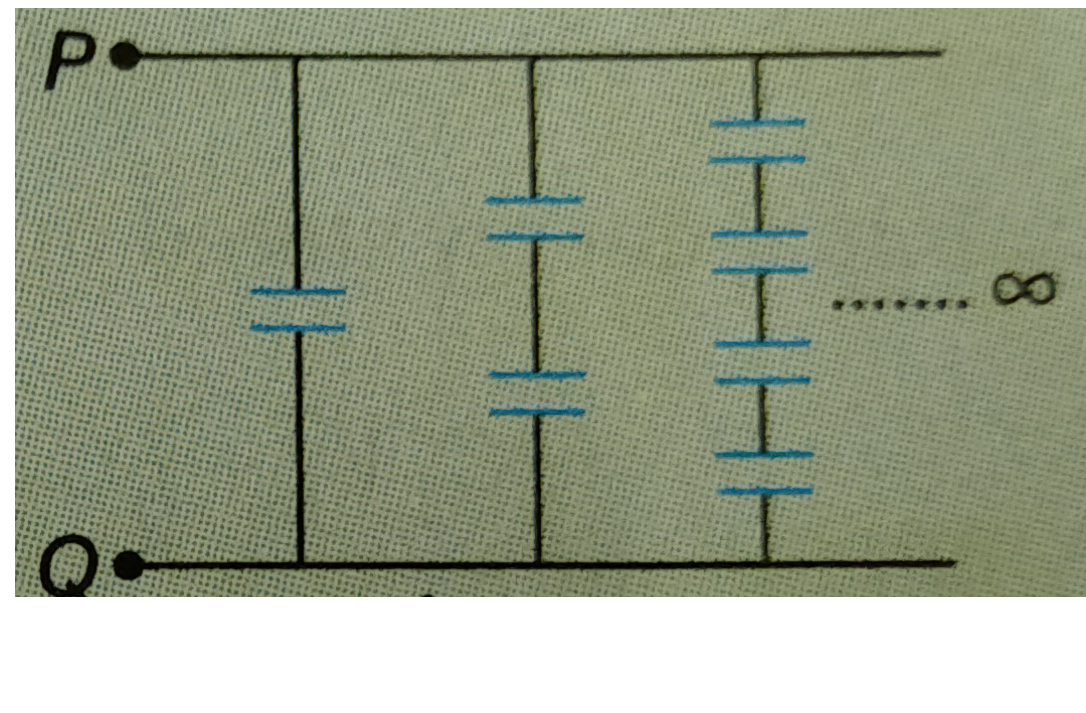 View Solution
View SolutionA 0.1F capacitor is charged by a 10V battery. After disconnecting the battery, this charged capacitor is connected with an uncharged capacitor. If the charge is equally shared between the two, then what will be the energy stored in the two capacitors? Compare this energy with the energy stored initially in the first capacitor.
10:48View SolutionThe equivalent capacitance of two capacitors connceted in series and in parallel are `C_s " and "C_p` respectively. Determine the capacitance of each capacitor?
05:22View Solution
EXAMPLES questions and complete solutions for chapter CAPACITANCE AND CAPACITOR of CHHAYA PHYSICS (BENGALI ENGLISH) of Class 12
All Exercises from CHHAYA PRAKASHINI Class 12 PHYSICS CAPACITANCE AND CAPACITOR
- ASSERTION REASON TYPE
- CBSE SCANNER
- COMPREHENSION TYPE
- EXAMINATION ARCHIVE WITH SOLUTIONS AIPMT
- EXAMINATION ARCHIVE WITH SOLUTIONS JEE MAIN
- EXAMINATION ARCHIVE WITH SOLUTIONS NEET
- EXAMINATION ARCHIVE WITH SOLUTIONS WBCHSE
- EXAMINATION ARCHIVE WITH SOLUTIONS WBJEE
- EXAMPLES
- HIGHER ORDER THINKING SKILL
- HOTS NUMERICAL PROBLEMS
- INTGER ANSWER TYPE
- MATRIX MATCH TYPE
- MULTIPLE CHOICE QUESTIONS
- MULTIPLE CORRECT ANSWER TYPE
- NCERT TEXTBOOK QUESTIONS
- PROBLEM SET - I
- PROBLEM SET - II
- SECTION RELATED QUESTIONS
- SHORT ANSWER TYPE QUESTIONS- I
- SHORT ANSWER TYPE QUESTIONS- II
- VERY SHORT ANSWER TYPE QUESTIONS
